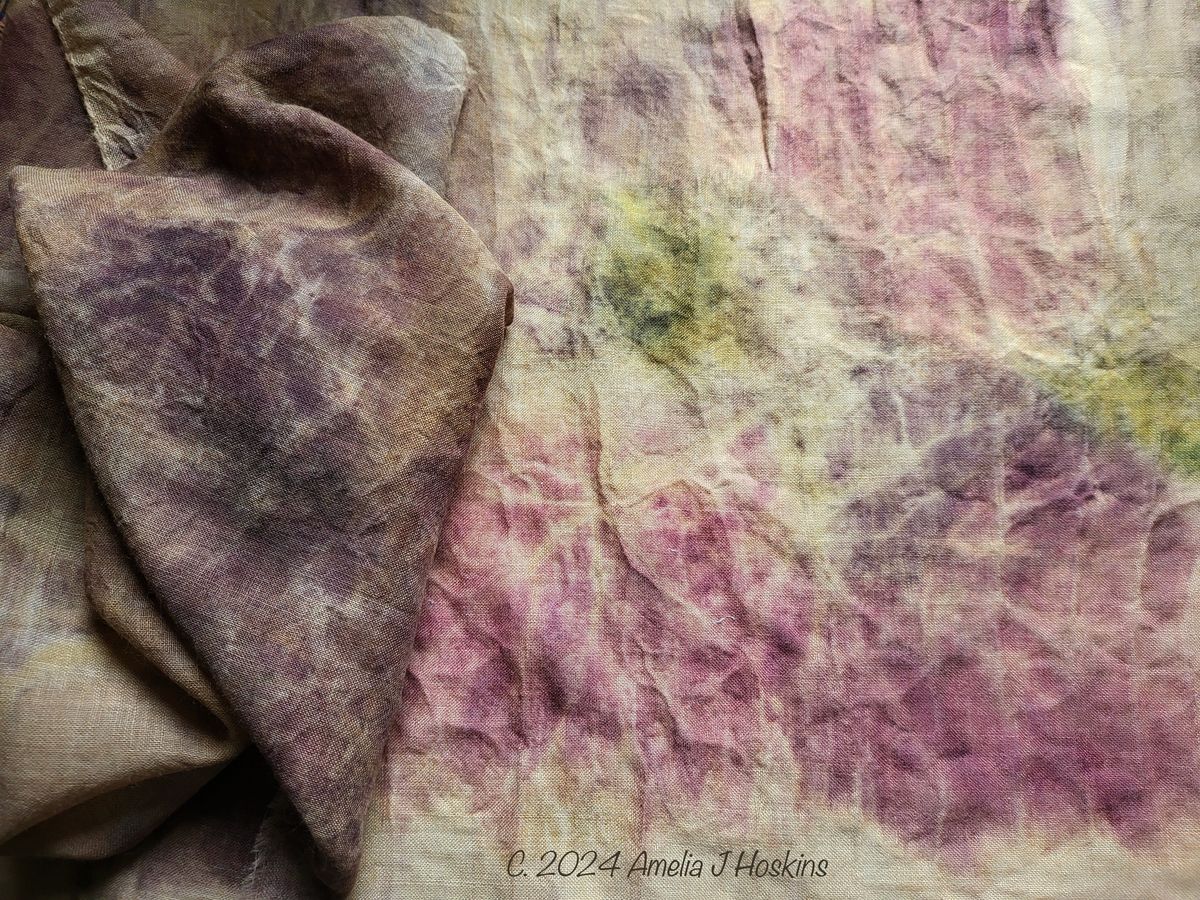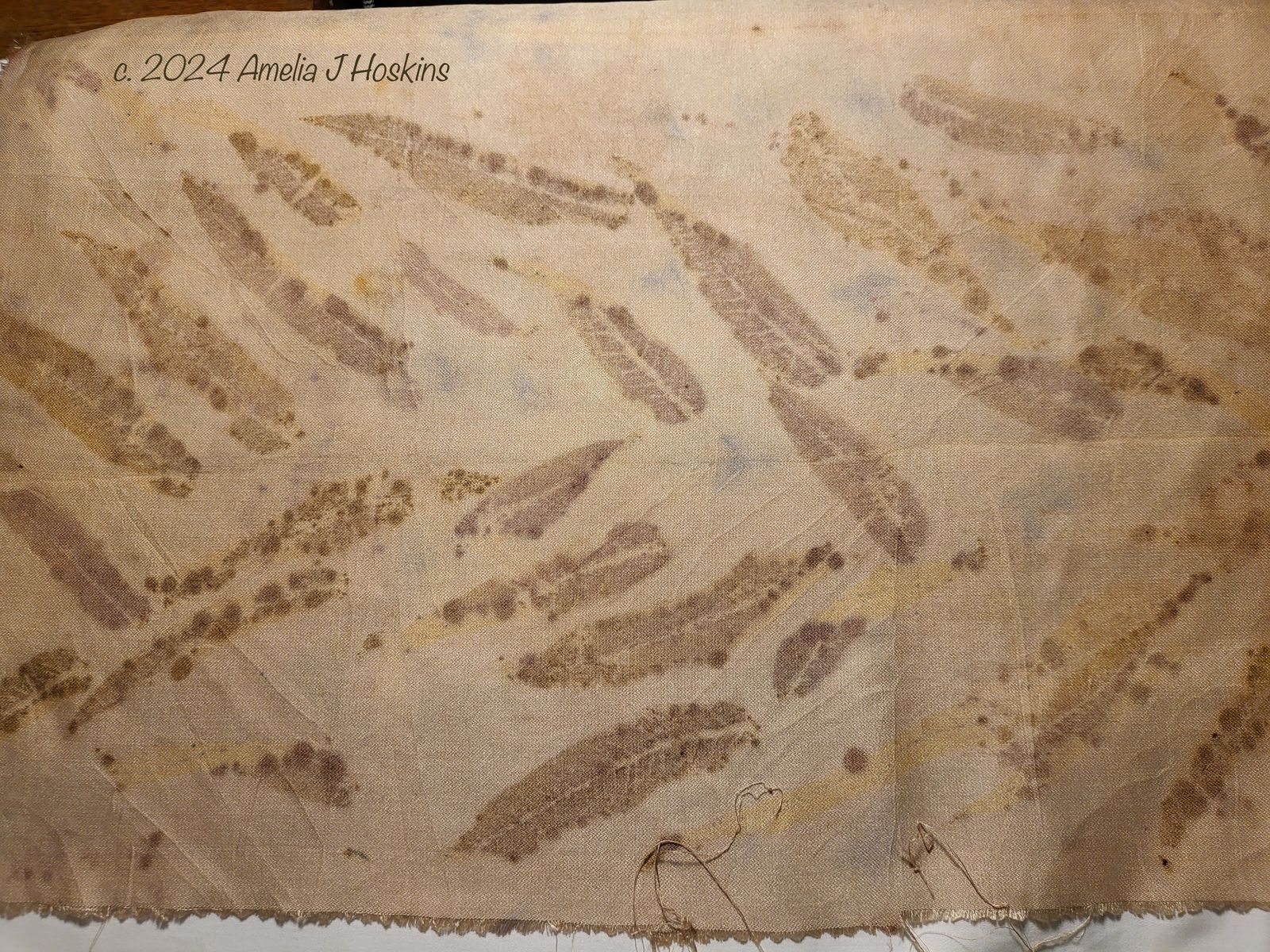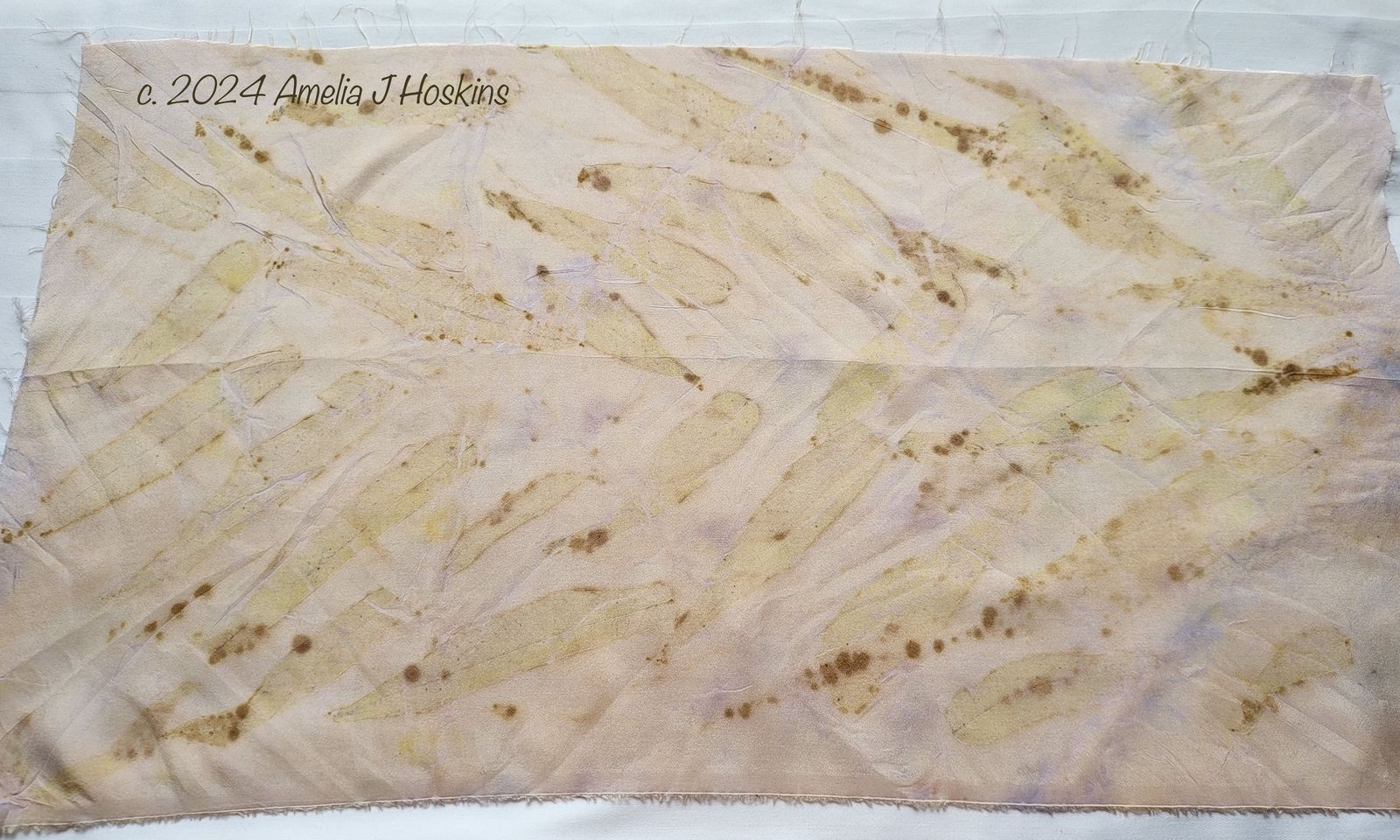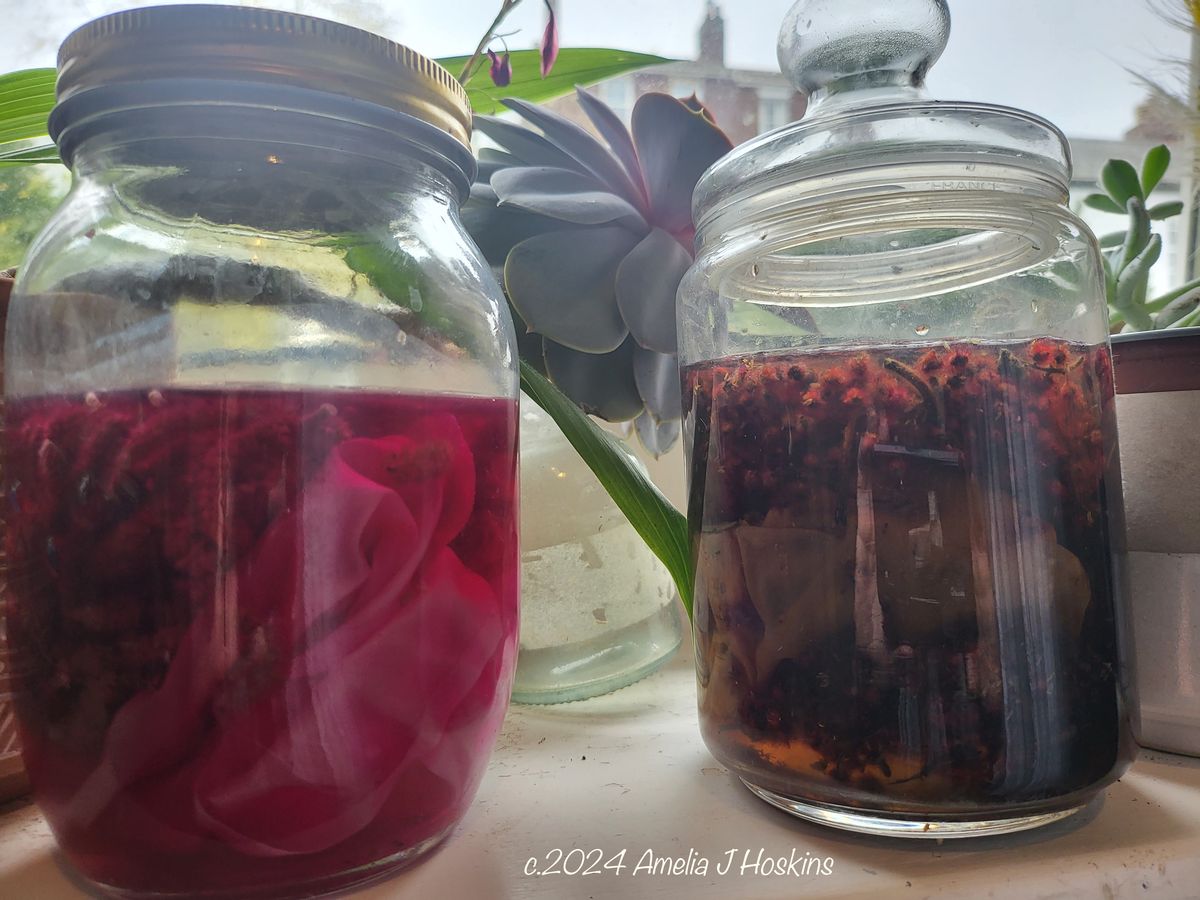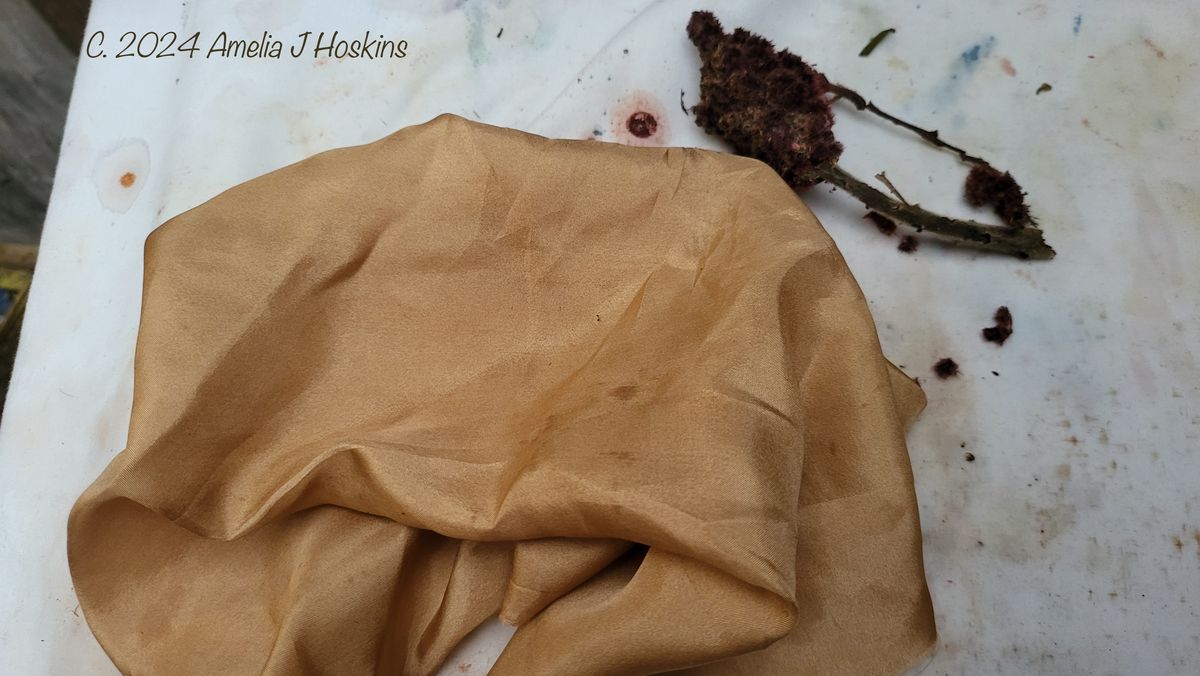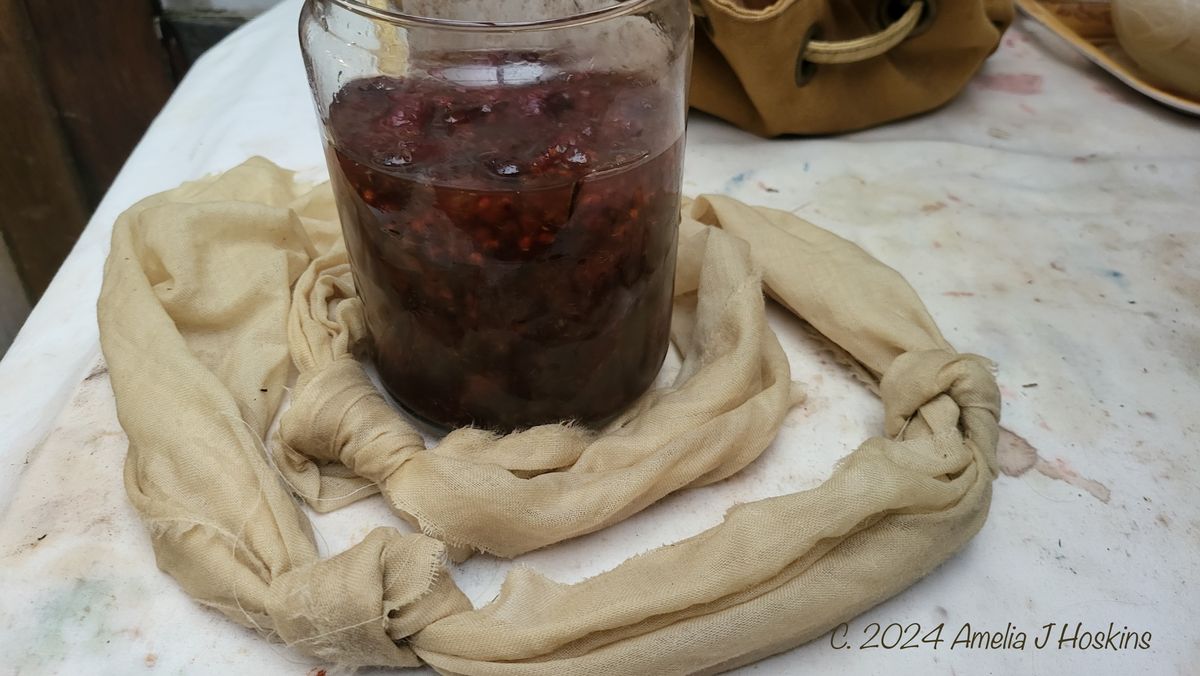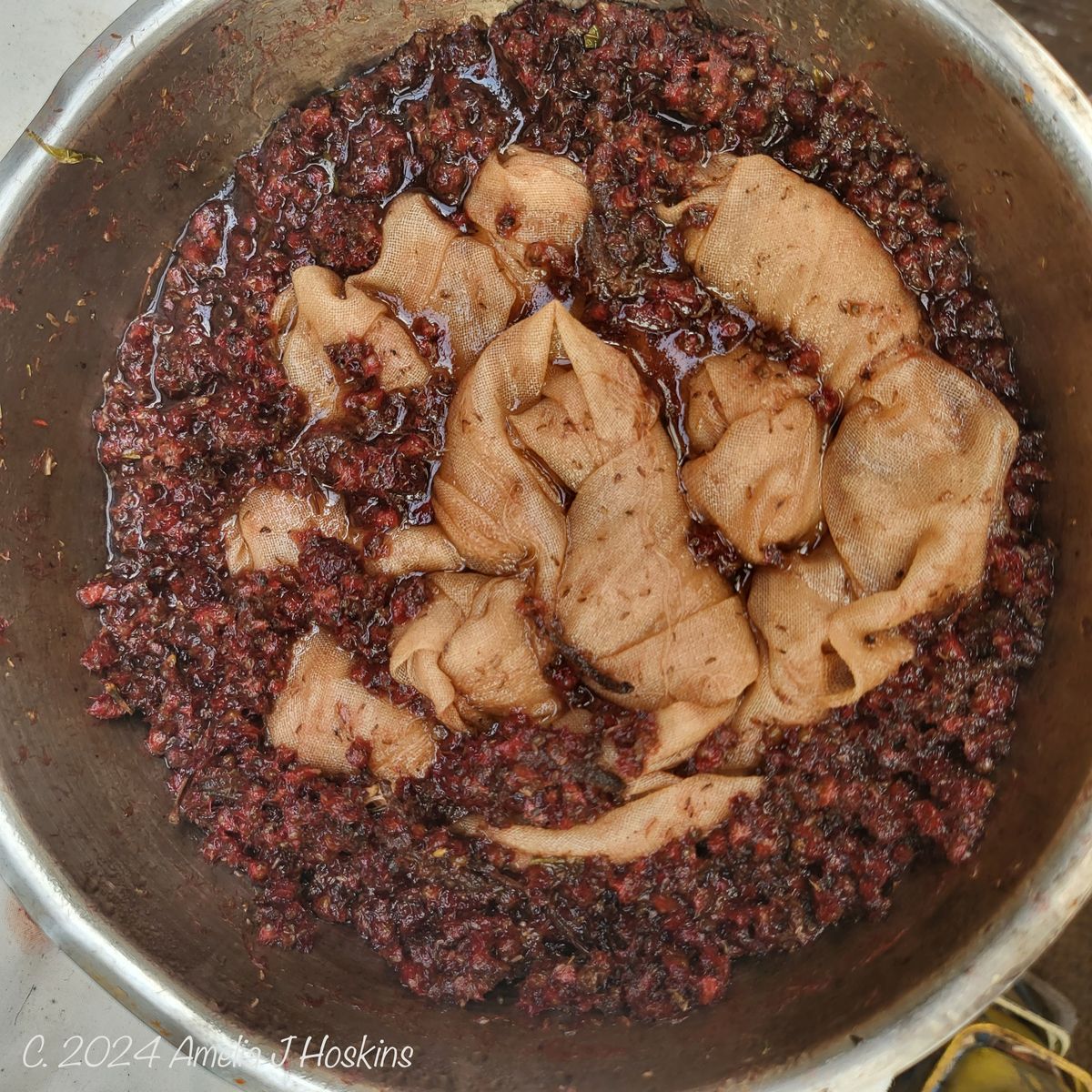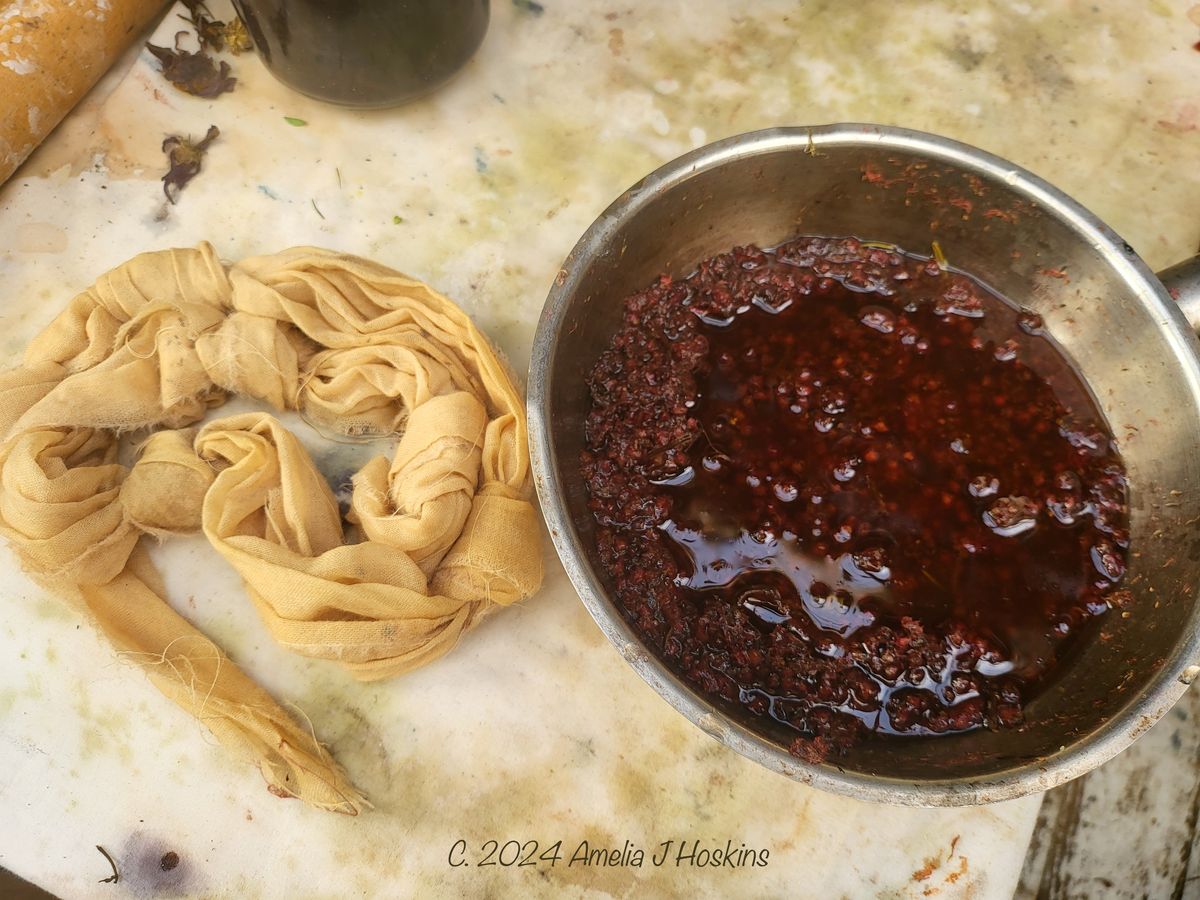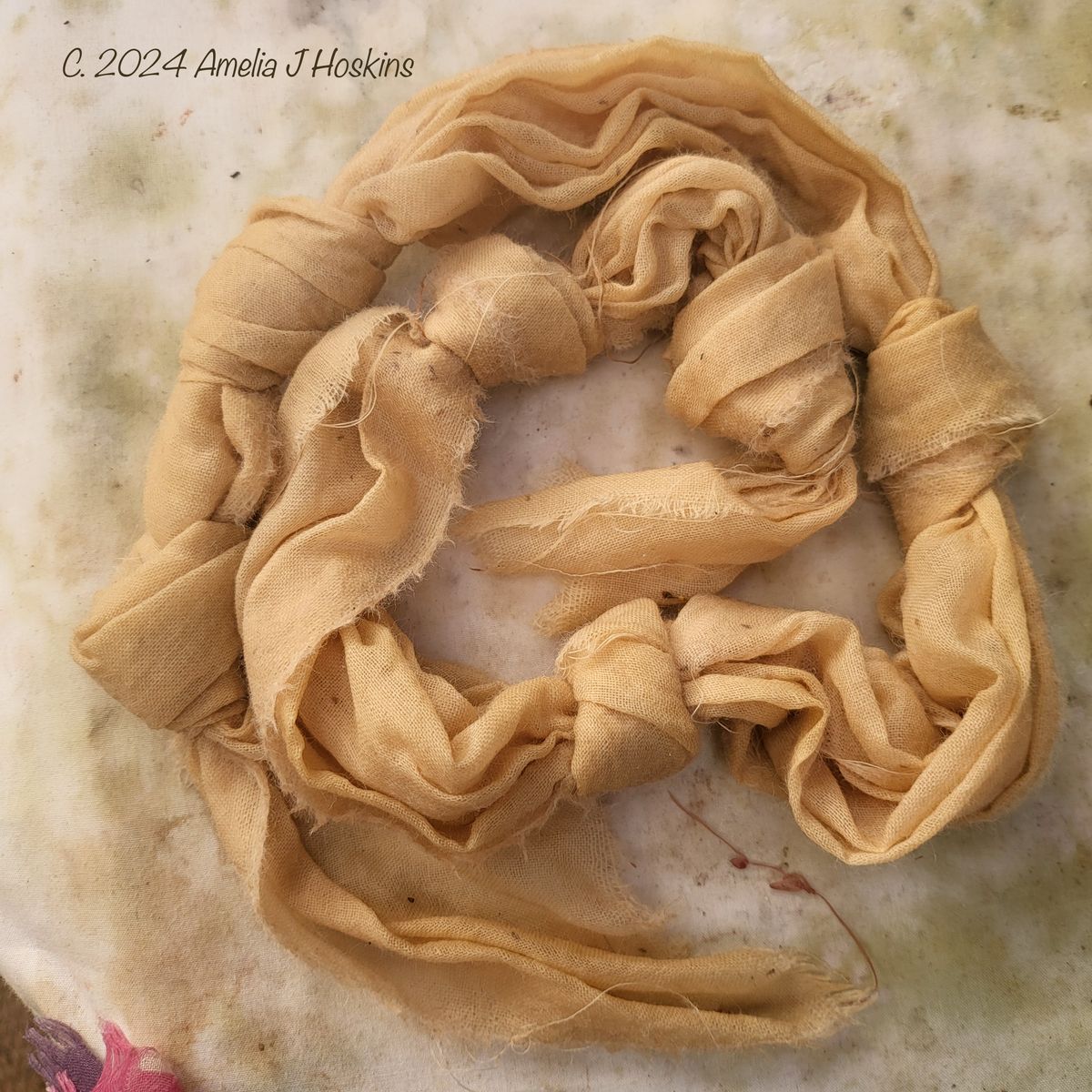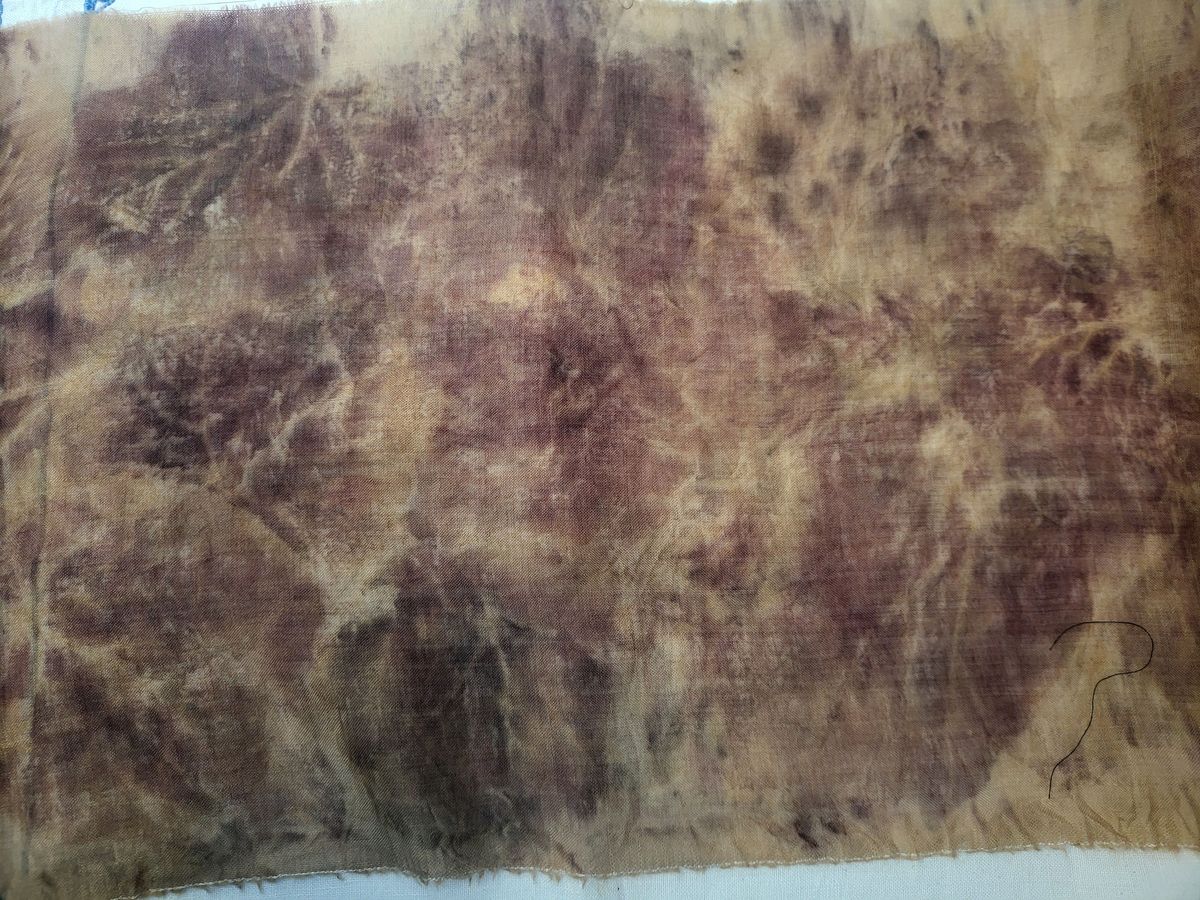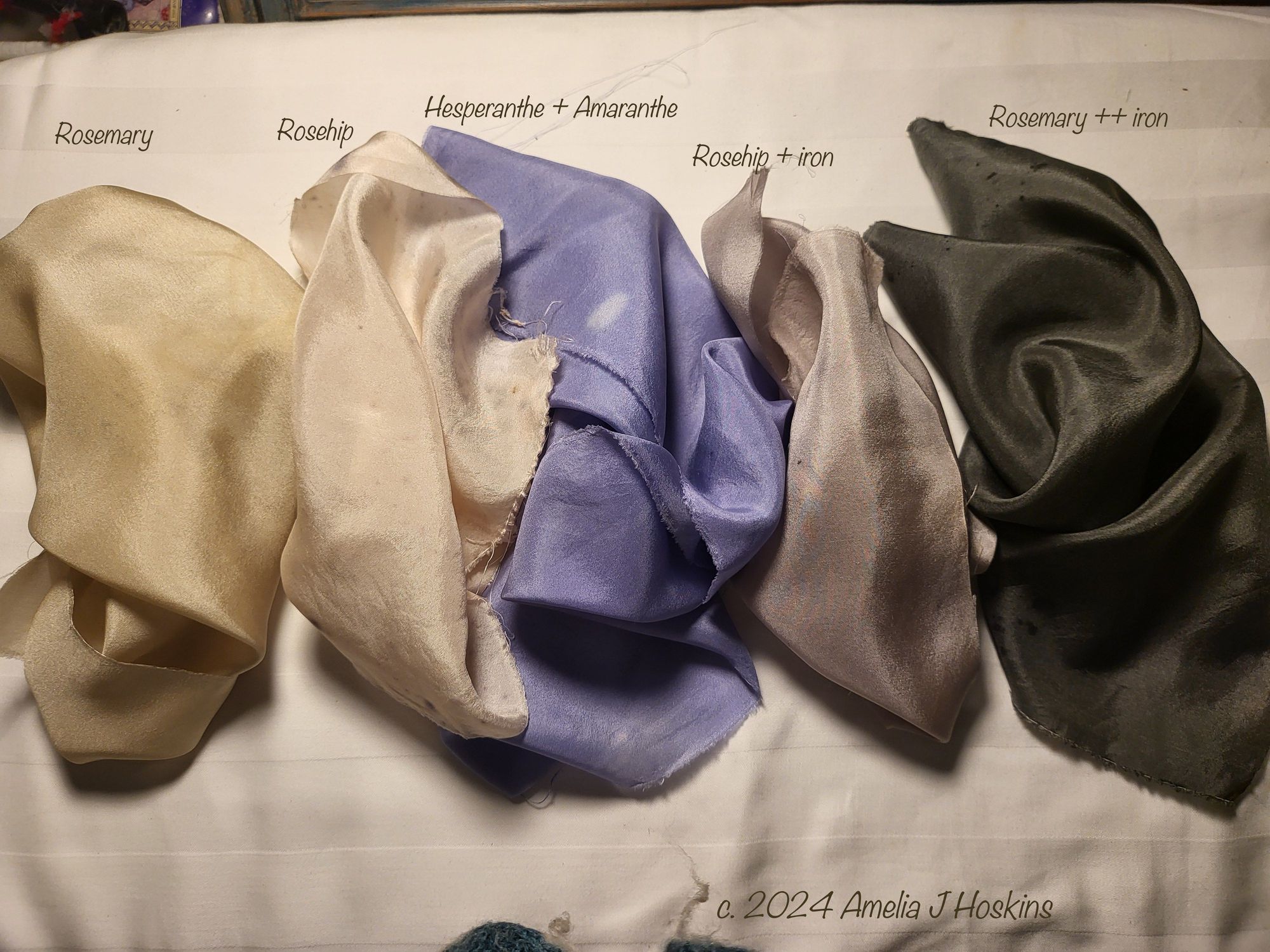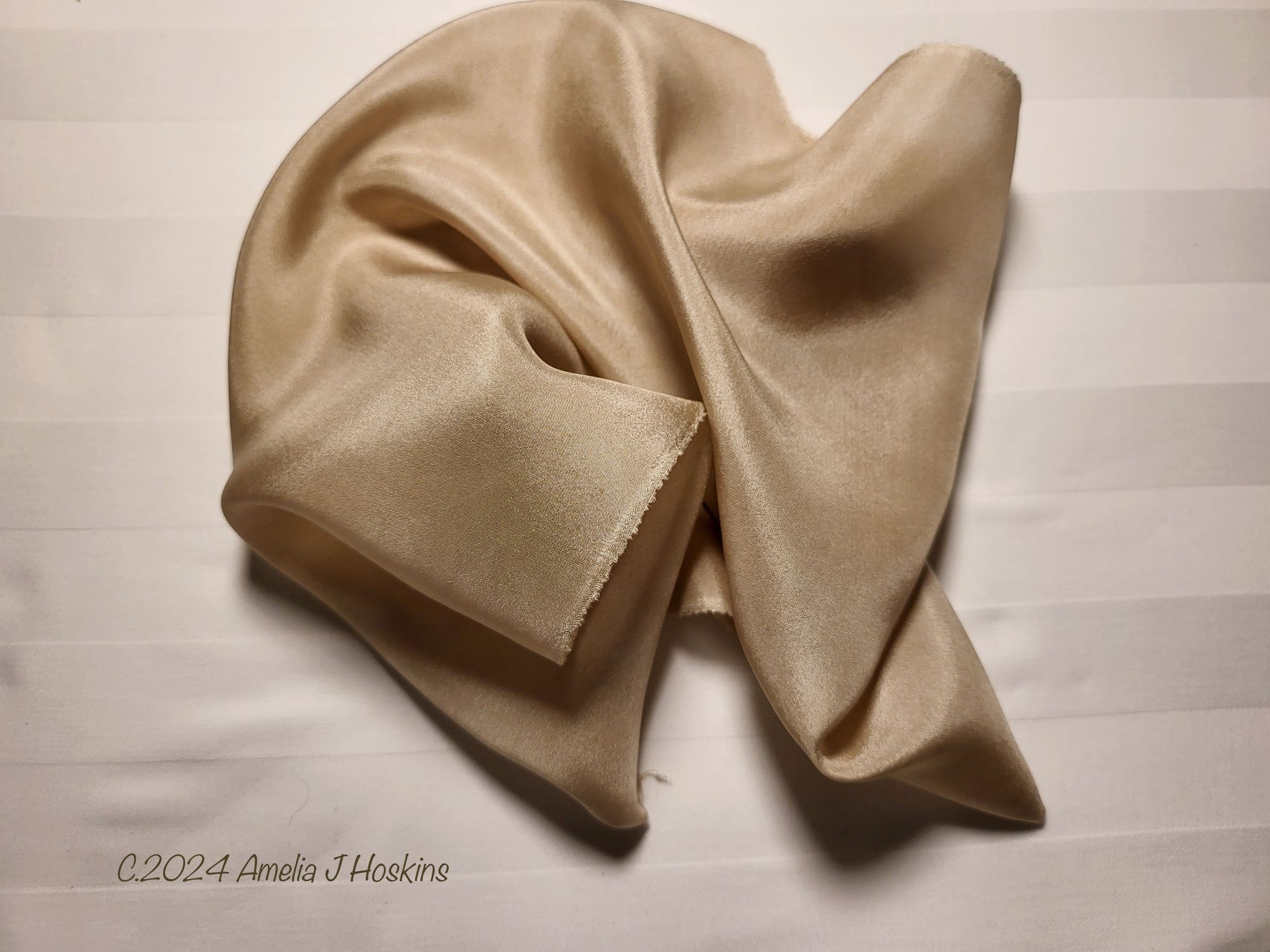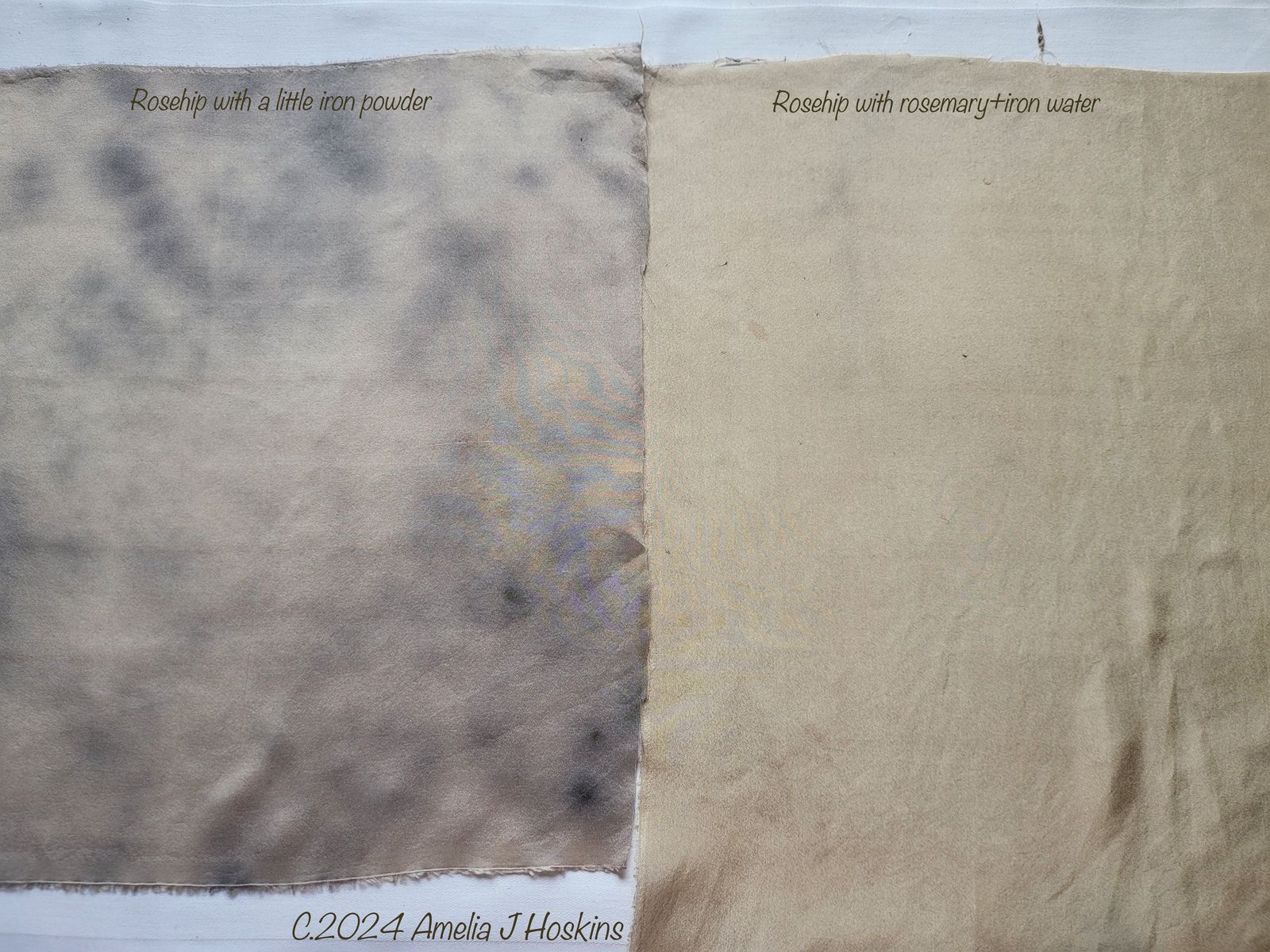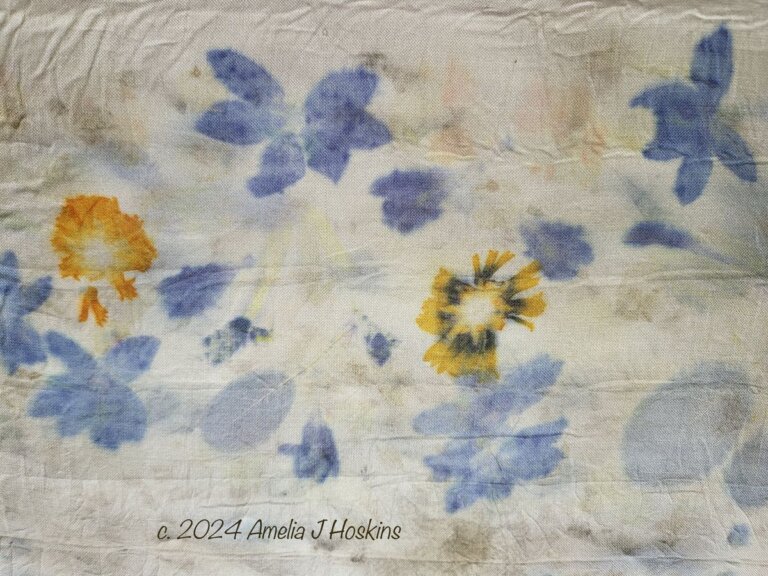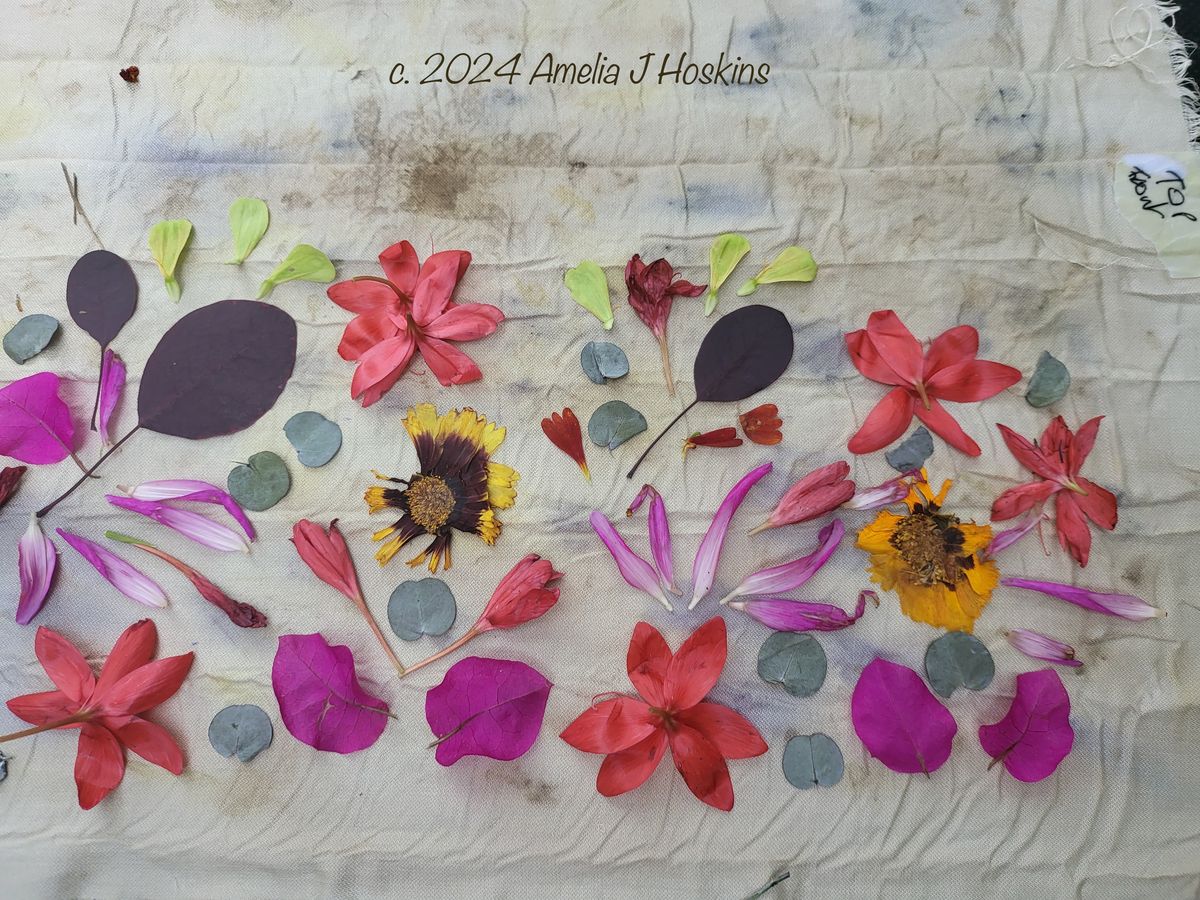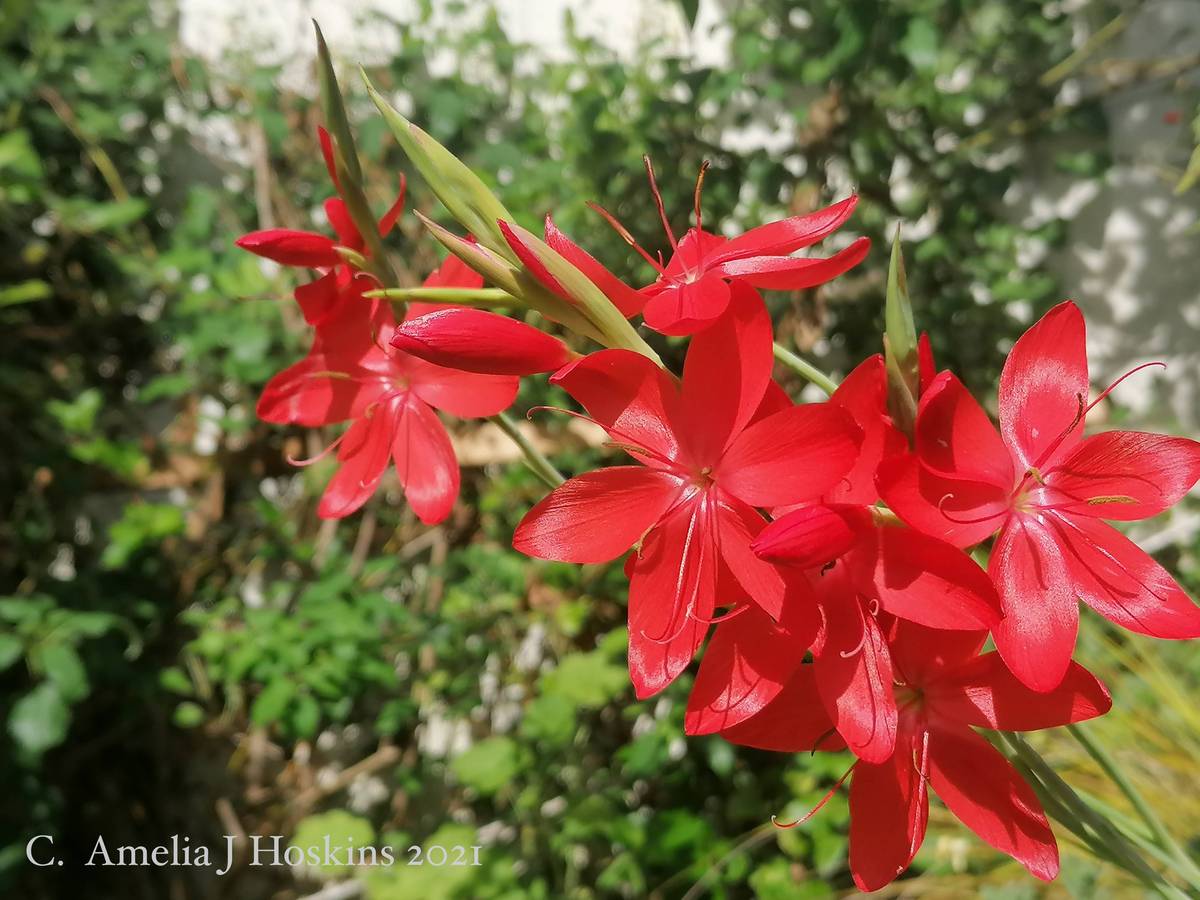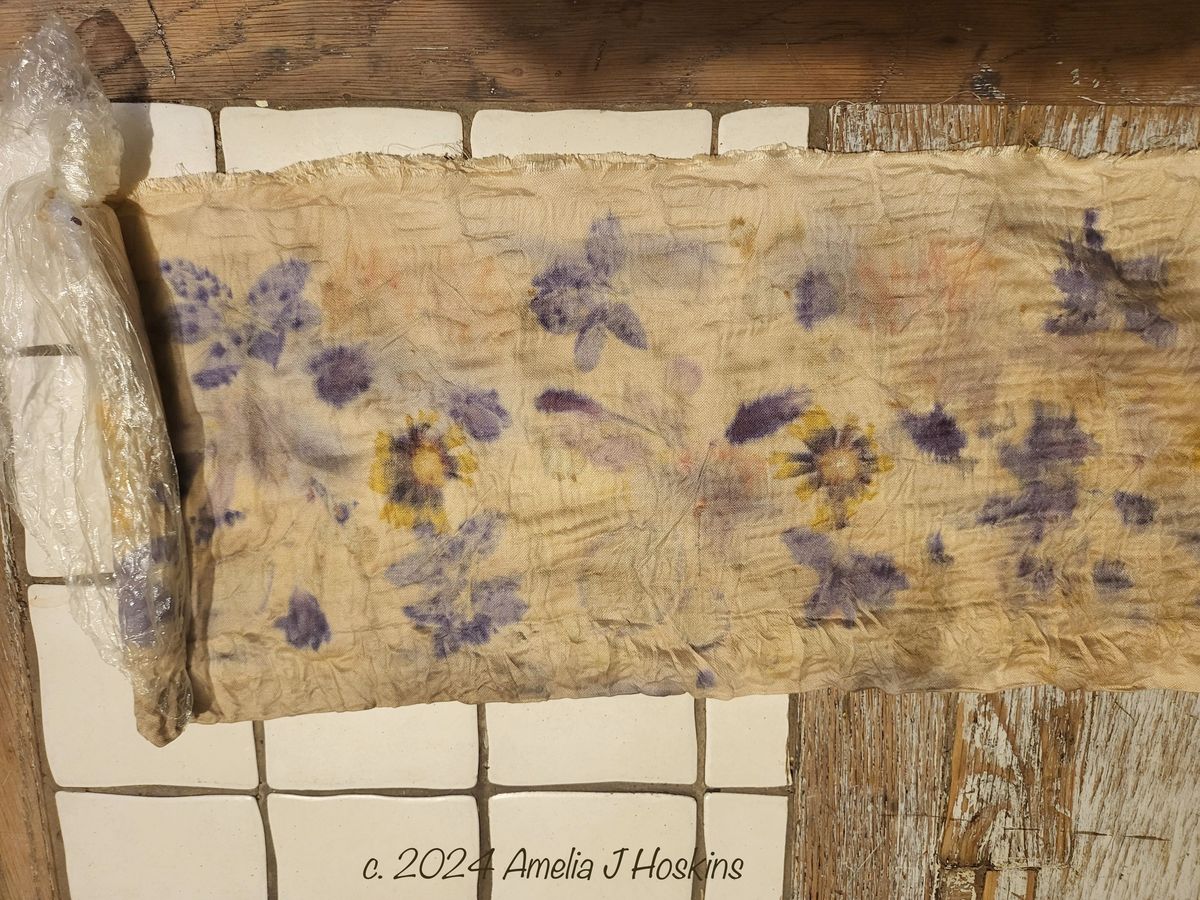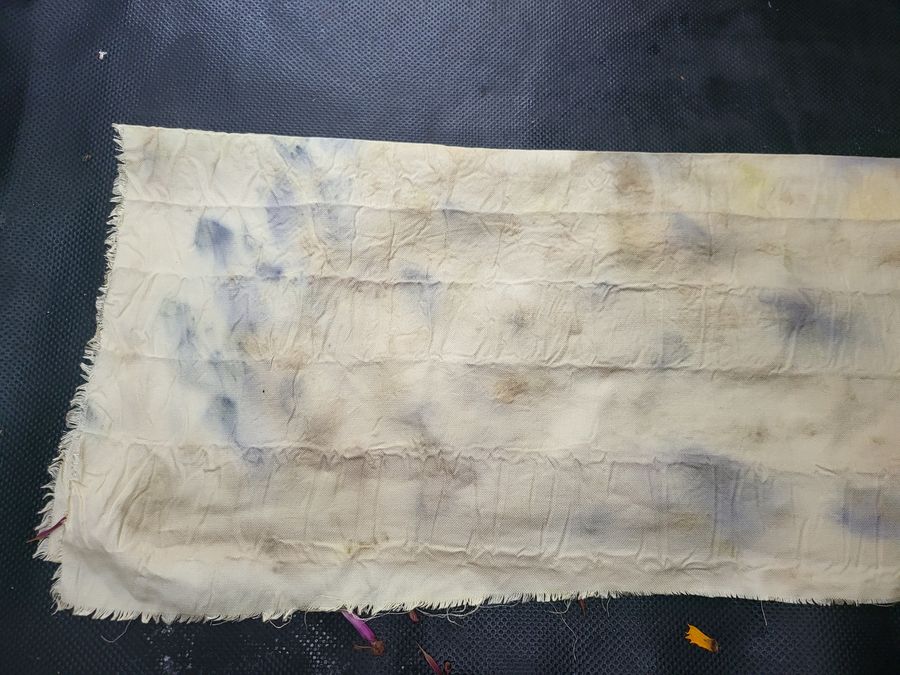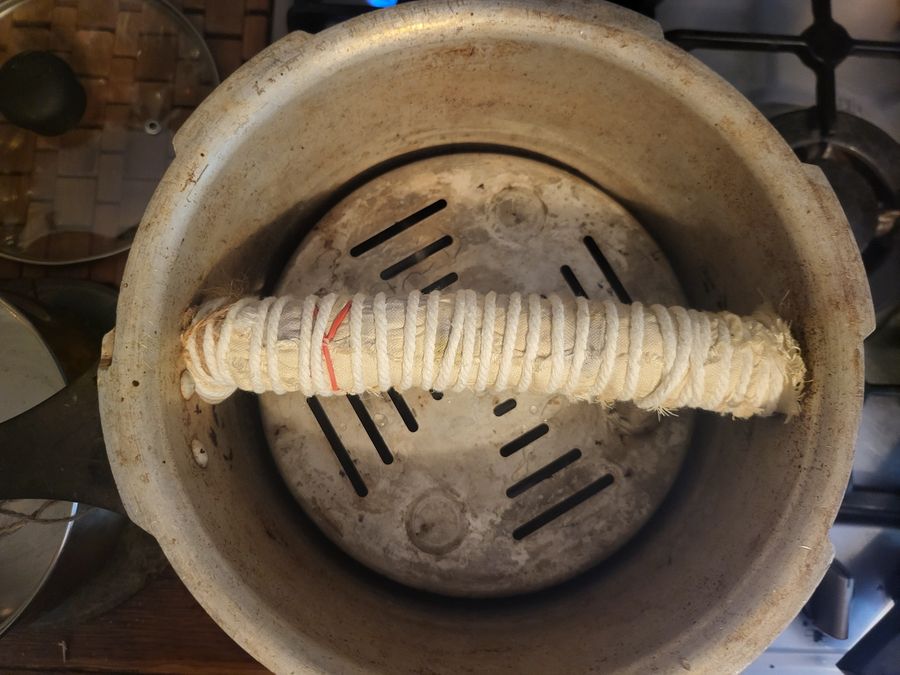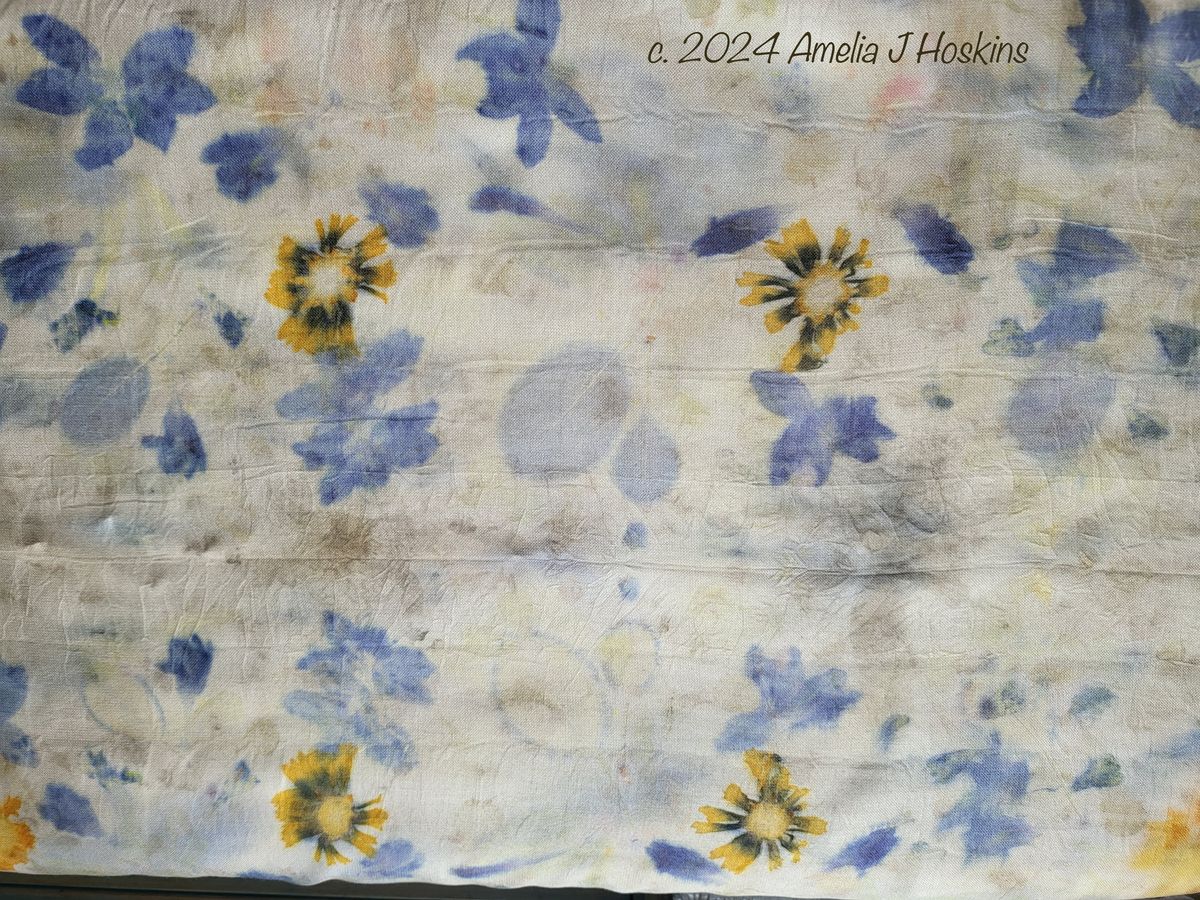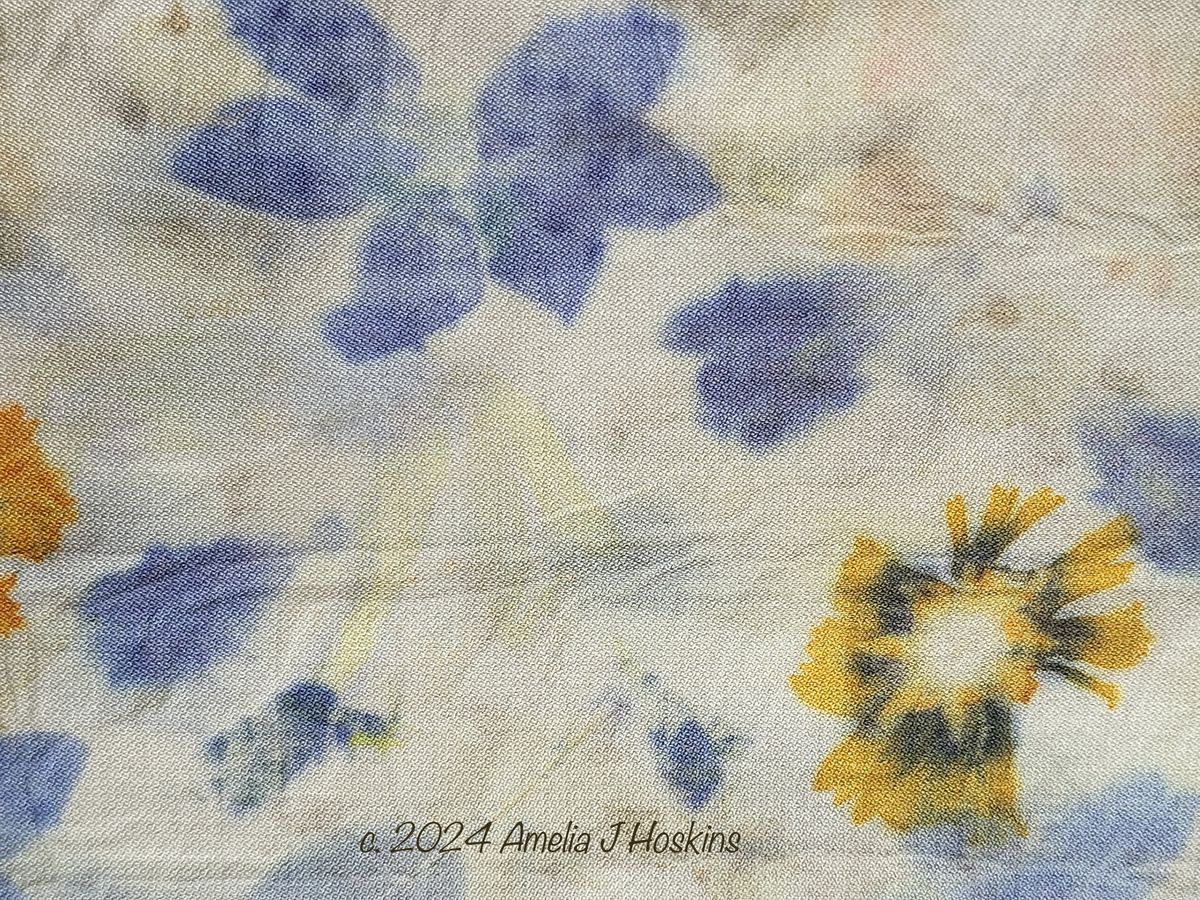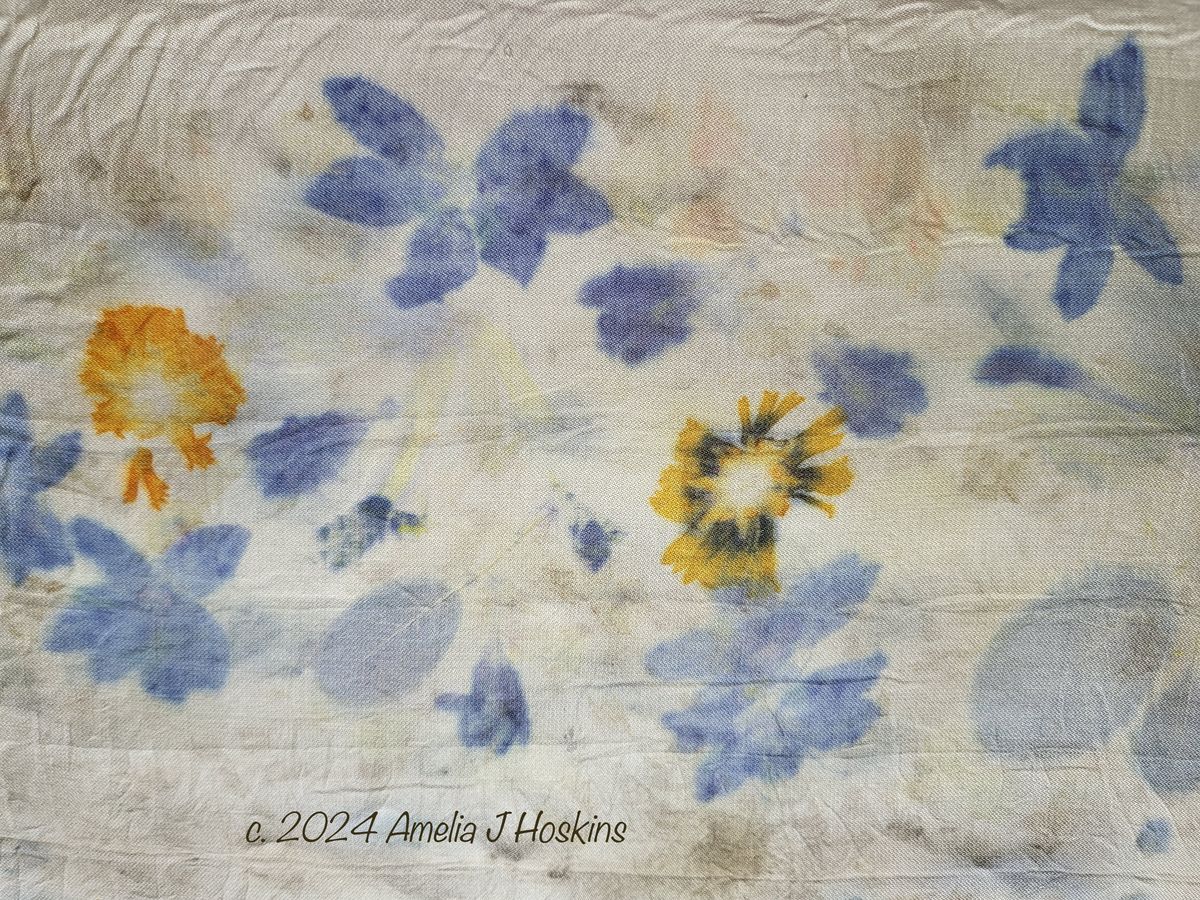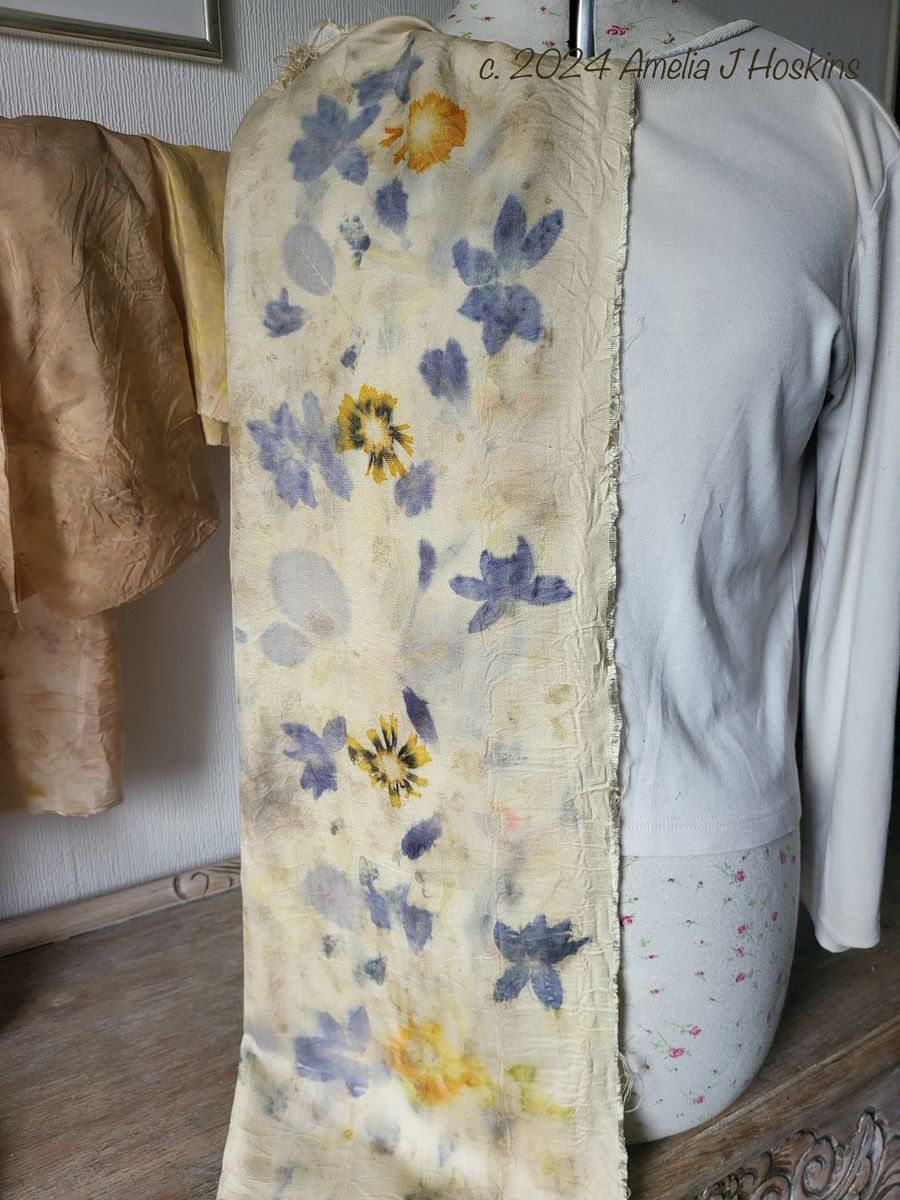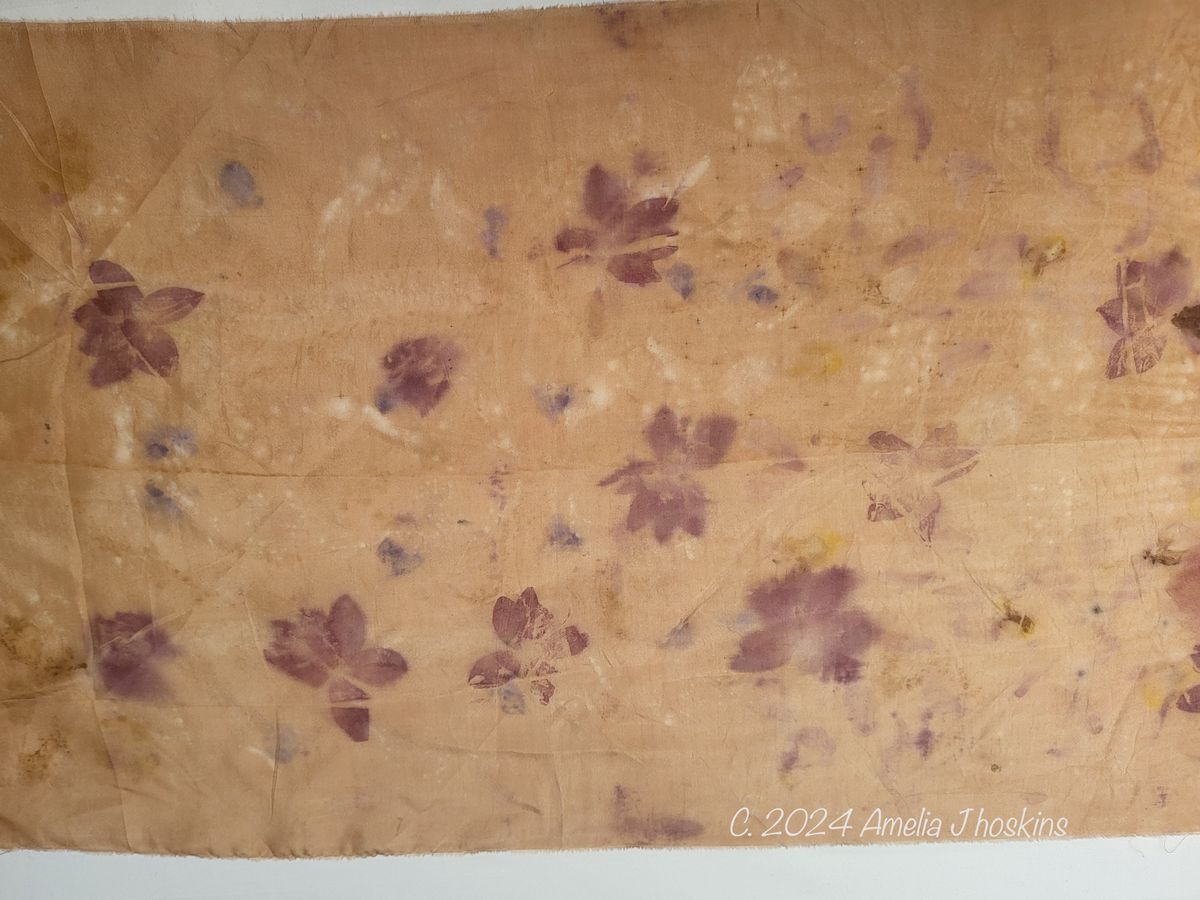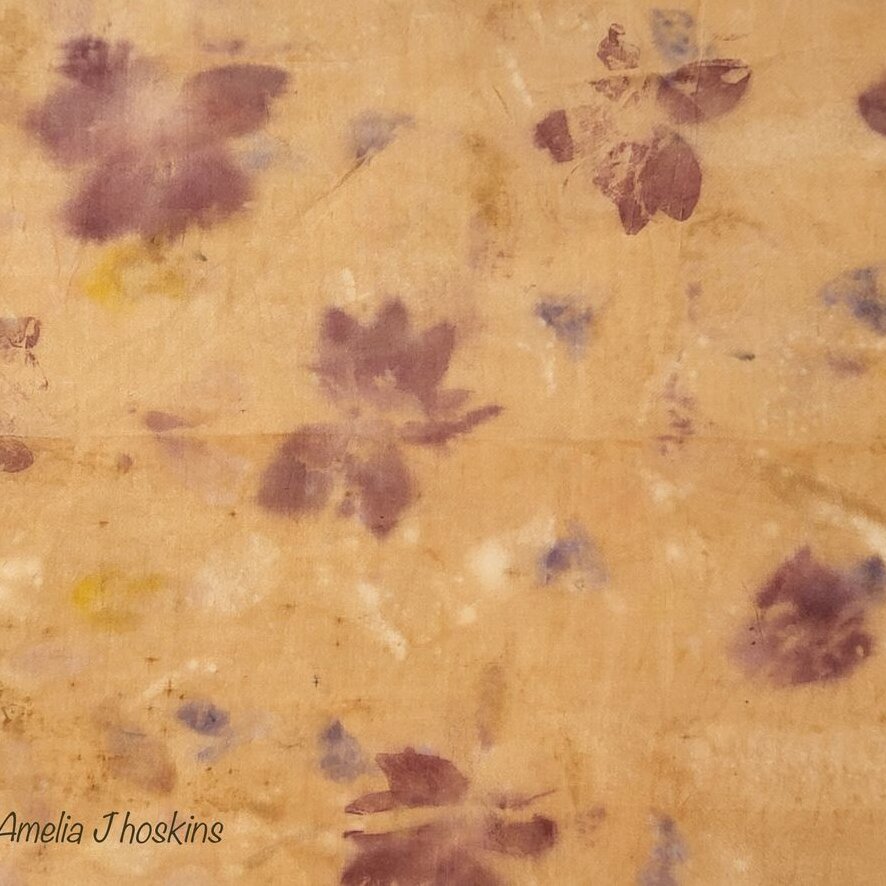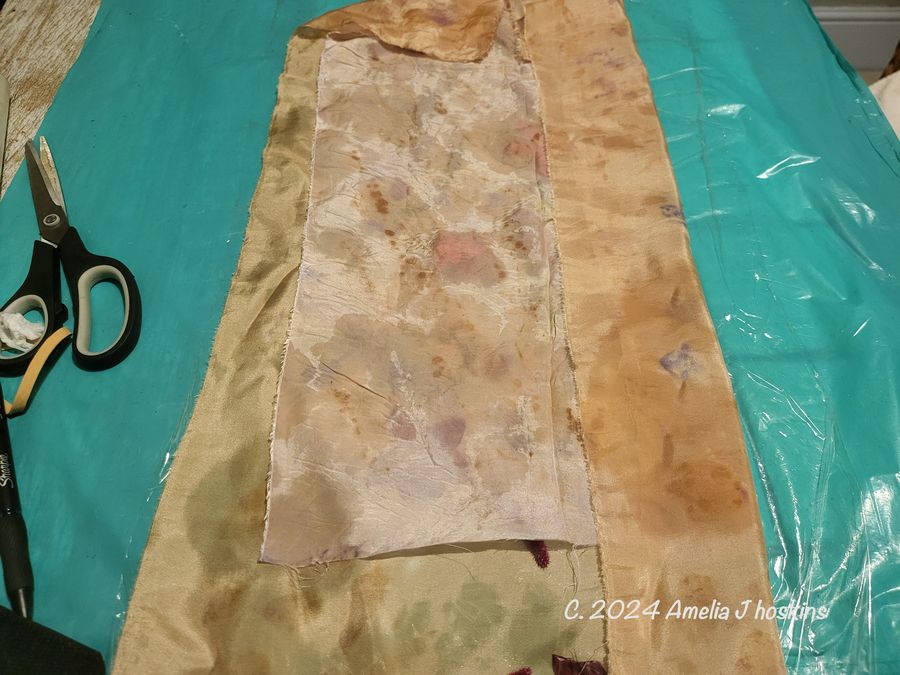Sumac Leaves and Flowers
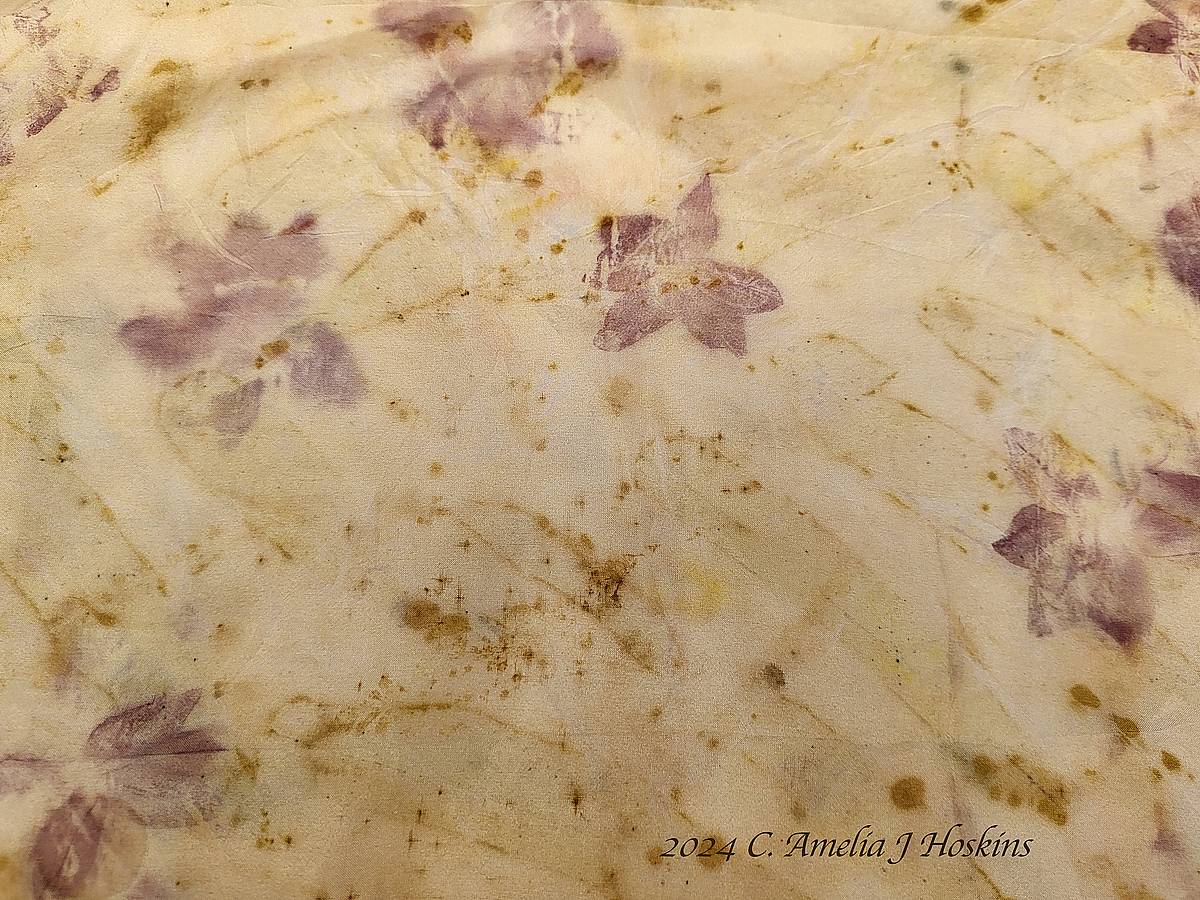
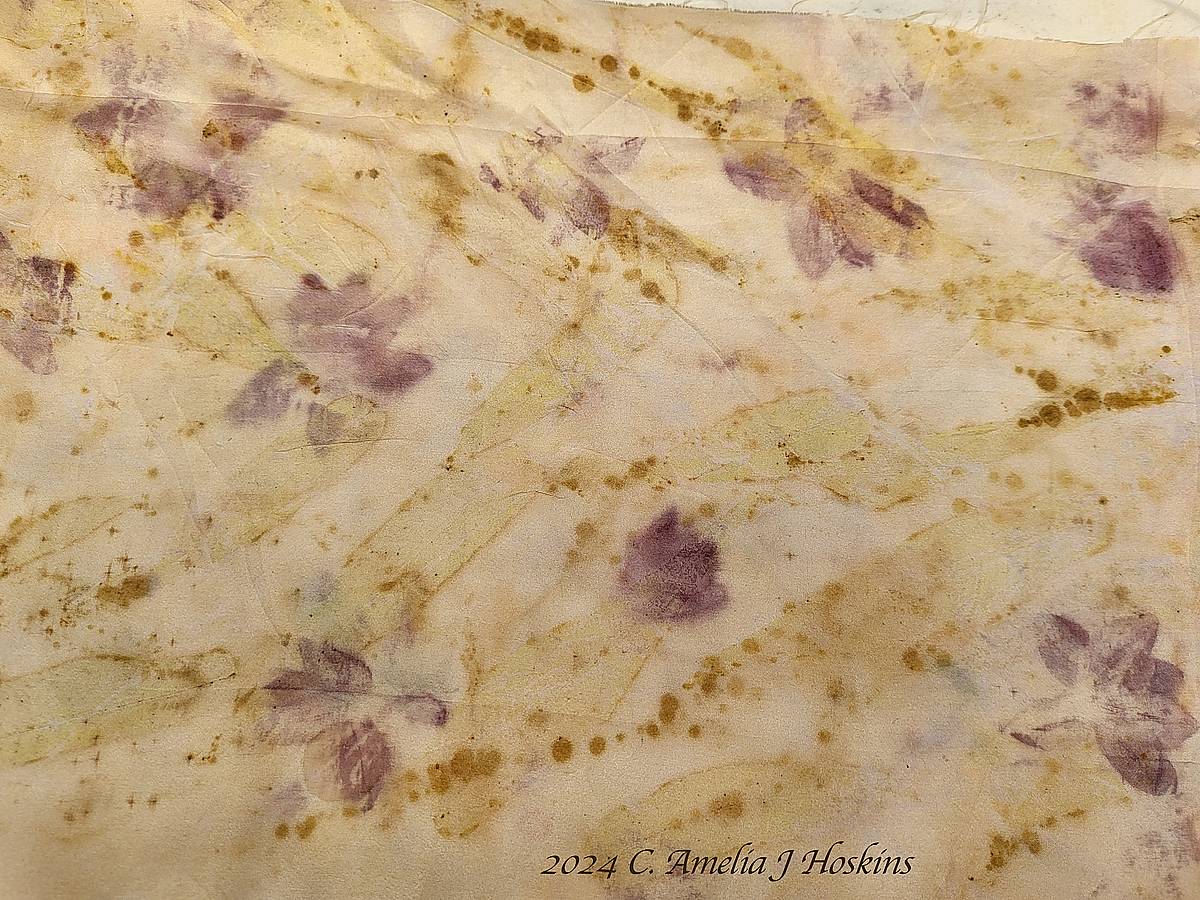
Sumac leaves (Autumn red) - Three samples steamed together
TOP: Ahimsa silk: Previously gold dyed produced Sumac light brown eco-print - 'Earth' side. Small deep purple salvias steamed out very pale. TWO ABOVE: Hesperanthe purple flowers printed on the habotai silk 'Sun' side. BELOW: No print hardly. The silk was previously dyed blue with Hesperanthe, but it steamed out completely, leaving a 'shadow' of pink.
SUMAC jar of flower-seeds
Habotai silk soaked for a week produced strong deep gold (like eucalyptus bark). Sumac jar resulted in a deep orangey brown dye in jar in sunny window. Silk and wool strands in amaranthe jar turned pale yellow. [needs correct modifier]
Wool scarf, knotted to get a variegated effect, soaking in Sumac flower seed dye liquid.
Fine Wool soaked in Sumac 48 hours. Took on a peachy gold colour. Knots made no difference to colour saturation when opened and washed. In Nov 2025 I found a ball of shetland wool left in the Sumac 2024 yr jar. It had turned strong ginger.
Sumac dyed fine wool scarf was over eco-printed with large red Catalpa Bignonionides leaves. A stronger violet-brown leaf result than Catalpa wool scarf 1; so Sumac tannin must have helped the leaf colour deepen; more so than previously over-dyed Comfrey wool scarf which stayed yellowish background. [Both Sumac flowers and Catalpa Bignoniodes leaves are both ready in November, so a good choice to try again in 2025]
Lemon juice brings out the PINK-CRIMSON of Catalpa leaves. It remains to be seen if it fades or not.
Catalpa Wool Scarf 2 continues HERE.
